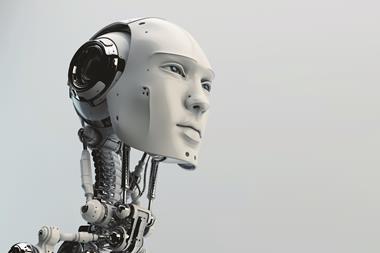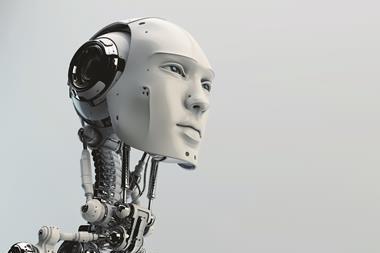AI has the capacity to transform processes and reveal unknowns

The annual ritual to define the ten issues that dominate business risks misses one key number: 11. We spend our time focused on the known, but fail to anticipate the unexpected. Off-radar risks are the most dangerous, as the organisation is wholly unprepared for competition from outside, rapid technology shifts or the slow familiar burners which, unnoticed, change the whole environment.
Recently a chief economist responsible for well in excess of half a trillion dollars of investment, related to me his dilemma. “I know that 40% of the S&P companies will be gone in the next ten or so years. Hence it matters less to us the short term performance of companies. What really matters is that whether they will be around at all in ten years’ time. On that we want to put our money.”
In a globally interconnected world, it is irresponsible to focus on a list of ten trends – there are so many No11s out there. The world is complex not complicated. Uncertainty is interconnected, off-radar and will eat your breakfast, lunch and dinner if you do not obsess over it.
The scope of the task outlined above can only be approximated through technical assistance. Something bigger than Excel and more ambitious than PowerPoint will have to help. Risk managers need to make big data and artificial intelligence central to their task, not peripheral to it.
Risk managers need to ask themselves if there is a risk that late or no adoption of AI by their business will cost them competitive advantage. What is the impact on the business model and where are the new opportunities and risks? Herein lies the core of the challenge for risk managers.
Answering the challenge of No11 is not a process issue but a capability one. With new technology solutions, use of AI and machine learning, there is now that capability available for knowing some of the unknowns.
There is now a strong case that risk managers can finally create real business value. We all know the cost of errors of not knowing or really understanding the risk environment is unacceptably high.
Digital risk management can significantly reduce losses in core risk areas by finally having the capability of knowing the unknowns: the hotspots and blind spots are now very easy to see. Forecasting trends becomes a lot easier; by the use of AI technology, the virtual risk officer starts to emerge.
But how does it work in practice? How do you recognise problem approaches or solutions spaces that are fundamentally different from what you are looking for?
The first challenge is developing the capacity to recognise the edge. New big data approaches combined with advanced natural language processing allow us to map entire domains of text. With these new maps we can see these hard to find off-radar edges. Events are warned of, causal chains codified, risks categorised, linked to response plans stored on the shelf and above all managed.
Observing these events or opportunity/risk dualities can be enhanced through technical means (radar, space based systems). The core concept here is the term warning. The future is something that should be planned for and controlled. Surprises are dangerous.
Early Learning Systems combine models of the future with the big data analytics to algorithmically gain edge insights into very large corpora of unstructured data. We have deployed this technology in a system called NewsConsole to improve our risk insights.
It ingests millions of articles every day from a seed list of hundreds of millions of URLs. This includes newspapers, social media, earning calls, annual reports, scientific reports, grants, academic publications, clinical trials, patents and so forth. The toolkit is built on the premise that the interrelationship between these normally disparate datasets will reveal new unique insights: it is primarily a text analysis system.
A risk management team can now interactively track viewpoints or themes in the dataset, receive reports, share insights, and collectively gain overview and insight into vast repositories of knowledge. The visualised texts are similar to maps. These visualisations are built up on the basis of extracted concepts (organisations, people, places, etc) or linguistic similarity.
By looking beyond experts and building maps of millions of text items, the system allows us to see the edge more clearly, algorithmically surfacing anomalies, and creating what we believe is a new conversation with data. Not just a strategic conversation but also a learning conversation inside a cybernetic system that has the ability to create, recreate, and reinterpret the context of our assumptions.
Risk opportunity
Rather than thinking of the outside world as dangerous and something to warn about, where every surprise is bad and requires immediate corrective action, we think of learning systems as a different way to engage with the organisational environment. The outside world is something to learn from, not just to warn or be warned against.
The future cannot be singular. At great risk, organisations pretend that the future has a single timeline, divined in management retreats and professed through a charismatic visionary leader. Tomorrow is inherently plural, risky, unknown, but not completely unknowable.
These new tools are a step change in our ability to discover and interact with the edge. When we map entire knowledge domains in minutes not months, tools can become interactive. Question and answer systems create stock but we want to have flow. Contingent preliminary insights are constantly reinterpreted as people and computing systems learn from each other. The ability to innovate from the edge depends on our ability to continually play with this moving wave front. It is now available, it is easy and simple to use, almost plug and play.
What does this all mean? There is a real opportunity for risk officers to start to ask the right questions to their business leaders and organisation: How is your business model going to be impacted by AI? Should we start building scenarios on possible future trends? What value can we extract from better use of internal data? What is the benefit of including new data sources? What (unstructured) data sets are we not using which can give real meaningful business insight?
Unknown developments become clear, we can now see the hotspots and blindspots at a very early stage. Being caught out can now be avoided. Risk managers will be in a much better position to have a meaningful discussion with management supported by real data and insights eliminating the high level of judgment on which current risk assessment processes are based. The risk of not knowing risk No11 is much less of a challenge.
The real change is happening in the risk domain. The risk community should embrace new technologies allowing them to perform their duties much better, drive better decision making and find efficiency opportunities. AI is a potential game changer for risk professionals.
Arnout van der Veer is a former chief risk officer at Reed Elsevier and was StrategicRISK’s European Risk Manager of the year in 2010. He is now CFO at NewsConsole














No comments yet